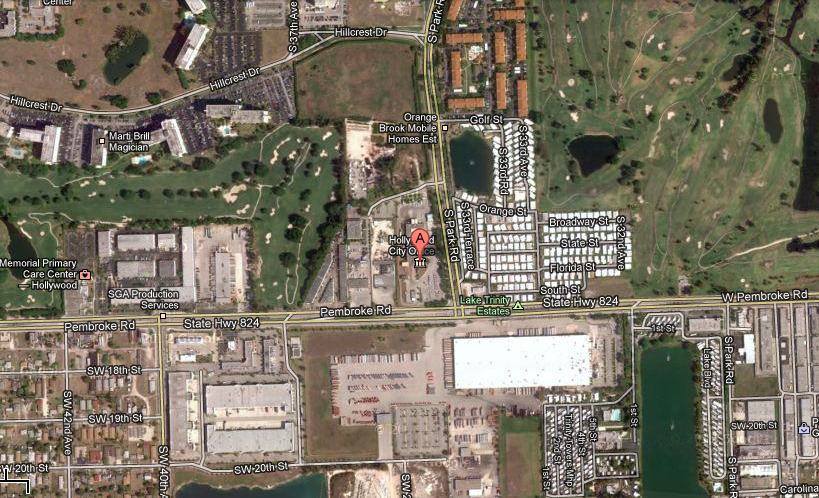Hollywood Hoping To Emulate Biscayne Landing Deal
Last year the City Commission designated the nearly 31-acre site known as HIAD — Hollywood Incinerator Ash Dump — as a Brownfield site. The designation could allow the city to get federal and state dollars to help clean it up. But after designating it a Brownfield, other city issues got in the way and nothing happened, said Mayor Peter Bober.
The city believes the site, although it may have contamination, is prime for development Now, with Davon Barbour, Hollywood’s director of the community and economic development department, there is renewed effort to put the site on the market. “I look at it and see potential,” said Barbour. “I see money for the city.”
“It is the single greatest economic opportunity in Hollywood,” said Bober, adding that having the property on the tax rolls could generate needed money for the cash-strapped city. Over the last few years the city has struggled to balance its budget, having to cut salaries and benefits, and having to generate new revenue sources.
The sprawling site — located at the corner of South Park Road and Pembroke Road, west of Interstate 95 — housed an incinerator from 1958-1973.

Bill Vulpis, assistant director of the city’s public works department, said that at one time, part of the land was used as a dump site for the ash. Assessments done by environmental agencies report there are “low level of contaminants,” mainly dioxins, underground. Barbour said the Florida Department of Environmental Protection has indicated that the land is developable if it is properly cleaned.
The first step would be putting out a notice seeing if there are any developers interested.
Barbour believes the land lends itself to industrial uses, but said anything from retail to residential is possible. He said the city also has to decide how much of the land it wants to give up, and where some of the city services now on the property would be relocated.
The incinerator building still sits the land, but these days it is used as a transfer for vegetative debris, said Vulpis. The land is where the fleet maintenance department works on city vehicles, and the public works department also has offices on the property. In addition, light poles and other reusable equipment are kept in stock on the site, and a nursery created by the city where plants destined for city medians and public areas.
Throughout South Florida, there are hundreds of Brownfield sites earmarked for redevelopment. In Miami-Dade alone, there are more than 400 contaminated parcels. The most well-known is the 180-acre site called Biscayne Landing, a former landfill, in North Miami. As of 2011, there were 15 designated Brownfield sites in Broward.
Most recently, Oleta Partners, led by developer Michael Swerdlow, closed on the Biscayne Landing site with the city at a cost of more than $17 million. The developers plan on building big-box retail stores, active and passive parks, residential high-rise buildings and other facilities.
Bober sees the same potential for Hollywood’s Brownfield site. He said finding a developer for this site should be the city’s top priority because it is the largest piece of vacant land the city owns.
“Landing this would be the Big Kahuna,” he said. “It may be a tough nut to crack, but it being difficult is precisely the reason we should do it.”
Source: Miami Herald
-------------------------
Get the latest industry news and information from CRE-sources delivered right to your email inbox!
And we promise…no more than one email each morning. CLICK HERE TO SUBSCRIBE TODAY!
